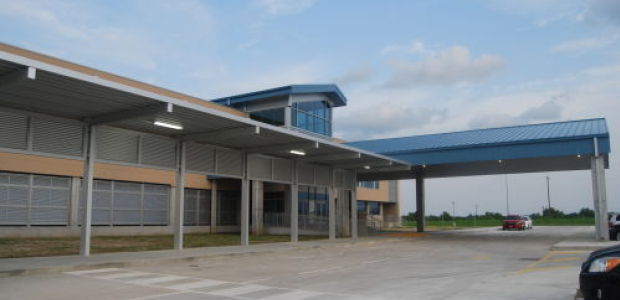Federal recognition a step closer, but local disagreements remain
July 22, 2014
Grand Caillou Middle moves to higher ground
July 22, 2014Terrebonne’s public high-school students will be in more classes per day this year for shorter stretches of time as the school district foregoes block scheduling for a seven-period day.
Students previously took four classes per day, with most subjects lasting only one semester. Courses will be year-round now and the periods, shorter in an adjustment that increases the total instructional time per course and better aligns with advanced placement courses and with standardized tests, Superintendent Philip Martin said.
“It is smaller chunks of time for a longer period,” Martin said of the new schedule. “Things aren’t moving as fast.”
Terrebonne’s school board unanimously approved the switch late last year with little fanfare; it is effective at all four high schools. Lafourche phased in the change to its three high schools over three years: Thibodaux High made the transition in 2011-12, South Lafourche followed and Central Lafourche did it last year, in 2013-14.
Bubba Orgeron, supervisor of secondary education in the Lafourche School District, said the transitions went smoothly. “Really, we had no kinks, no issues,” he said.
Louisiana’s high-school students need 24 credit hours to receive a traditional diploma or 23 credit hours to receive the career diploma, an endorsement for career and technical colleges.
Under block scheduling, students had 32 opportunities to obtain these credits; now, they’ll have 28 chances. The reduction means a greater penalty is inflicted on students who fail courses, heightening the need for the pupils to perform well.
Officials acknowledge there are positives and negatives to both scheduling methods, but locals who are sidling up to the seven-period day contend the good outweighs the bad.
Seven-period scheduling ensures more instructional time per class. At 90 minutes for half a semester, students are in class for about 8,100 minutes. At 50 minutes for a full year, total course time rises to 9,000 minutes.
“Just by nature of going a 7-period day, we gain a month of instruction,” Orgeron said.
That’s more time to handle more rigorous curriculum associated with the phased-in Common Core learning expectations and more time to prepare for Louisiana’s high-stakes end-of-course exams.
EOCs, administered to high-school students, cover first-year algebra, geometry, English II and III, biology and U.S. history. These tests comprise up to 30 percent of the student’s final grade in the subject, and failing scores on those exams can prevent students from receiving diplomas.
Schools are also judged on how their students fare on EOCs, a factor in annual school and district performance scores.
Lafourche’s EOC scores have improved, but it’s unclear what impact – if any – the scheduling change had on test scores, Orgeron said. Officials will continue to study the cause and effect, but it will take more years to make a declarative judgment.
“We had growth, but to attribute it to the schedule, I’m not sure if we can go that route just yet,” Orgeron said.
Students have to be prepared to soak up a wider berth of subject matter over the course of a day and could face more homework assignments.
But Orgeron said the day-to-day depth required of the students is less than on the block schedule because the greater instructional time decelerates the amount of material that has to be covered in a given day. Regular class exams are spaced further apart than they are during a block schedule, he said.
The seven-period day could also acclimate students to the college environment. Orgeron said he has seen students struggle to take more than four college courses each semester.
“I think it was because they were not accustomed of having a substantial amount of classes per semester,” Orgeron said.
On the local level, it also means more work on teachers, at least initially, as they prepare to lead more classes each day. Many instructors last year to create their own lesson plans aligned with Common Core in the absence of finished, complete learning materials offered by vendors.
While many of the debates about scheduling advantages are a matter of perspective – For instance: Is it better to go more in depth with students over a shorter period of time or spread the learning material over the full year to ensure constant familiarity? – some issues are more equivocal.
Because block scheduling begets more time per sitting, it is better for project-based learning, science lab work and technical programs, which is a steadily increasing component of schools in Lafourche and Terrebonne.
In Lafourche, the Career Magnet School is anticipated to open for students in August 2015. Located in Lockport, students will be bussed there from high schools throughout the parish to learn marine operations, welding, automotive technology and other courses that require hands-on education.
To combat the 50-minute period scheduling, these students will be on the A-B schedule, going to one class for a longer period on one day and then making up other classes with extended on the subsequent day, alternating on a daily basis throughout the year.










